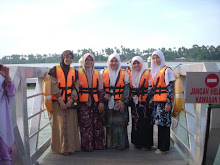Deepest oil well in the world, seven miles into the seabed
NEW YORK: Nearly seven miles (11 kilometers) below the Gulf of Mexico, oil company BP has tapped into a vast pool of crude after digging the deepest oil well in the world.
The Tiber Prospect is expected to rank among the largest petroleum discoveries in the United States, potentially producing half as much crude in a day as Alaska's famous North Slope oil field.
The company's chief of exploration on Wednesday estimated that the Tiber deposit holds between 4 billion and 6 billion barrels of oil equivalent, which includes natural gas.
That would be enough to satisfy U.S. demand for crude for nearly one year. But BP does not yet know how much it can extract.
"The Gulf of Mexico is proving to be a growing oil province, and a profitable one if you can find the reserves," said Tyler Priest, professor and director of Global Studies at the Bauer College of Business at the University of Houston.
The Tiber well is about 250 miles (400 kilometers) southeast of Houston in U.S. waters.
At 35,055 feet (10,685 meters), it is as deep as Mount Everest is tall, not including more than 4,000 feet (1,200 meters) of water above it.
Drilling at those depths shows how far major oil producers will go to find new supplies as global reserves dwindle, and how technology has advanced, allowing them to reach once-unimaginable depths.
Deep-water operations are considered to be the last frontier for pristine oil deposits, and the entire petroleum industry is sweeping the ocean floor in search of more crude.
BP needs to invest years of work and millions of dollars before it draws the first drop of oil from Tiber. Such long waits are not uncommon.
Three years after announcing a discovery at a site in the Gulf called Kaskida, BP has yet to begin producing oil there.
Projects like the Tiber well will not reduce U.S. dependency on foreign oil, which continues to grow. But new technology does permit access to major oil finds closer to U.S. shores.
BP expects Tiber to be among the company's richest finds in the Gulf on par with its crown jewel, the Thunder Horse development.
Thunder Horse produces about 300,000 barrels of oil equivalent per day, as much crude as half of Alaska's famous North Slope.
Even if Tiber produces that much, it would still be a trickle compared with the largest oil producers in the world - the Ghawar field in Saudi Arabia, which produces 5 million barrels per day.
But because it's close to home, Tiber would be especially attractive to refiners in America, where the government wants to cut down on oil imports from the Middle East.
"Early indications are that it's a significant positive discovery," said Matt Snyder, lead analyst with Wood MacKinzie's Gulf of Mexico research team.
Exploration companies recently have been pushing drilling operations farther from shore because of technological improvements that allow them to handle extreme depths and pressure, Snyder said.
It's an expensive process.
A production platform costs more than $1 billion to build. Drilling a deep-water well can add another $100 million, and if crude is located, it could cost another $50 million to bring the oil to the surface.
"And when they finally get down there, it's very hot," said Leta Smith, a director with Cambridge Energy Research Associates' Global Oil Supply Group.
"It could be upwards of 250 degrees Fahrenheit. The pressures can be the most challenging aspect of it. These rocks are over-pressured, which means you need to have a lot of special equipment."
For an ambitious project like Tiber to pay off, experts say crude must cost at least $70 to $75 per barrel, though lower prices have never slowed the industry.
When crude prices fell below $20 per barrel in the late 1990s, exploration and Thunder Horse never slowed.
"They're not swayed by daily price swings when it comes to planning deep-water exploration," Priest said.
BP's discovery is the latest in what's called the "lower tertiary" region, an ancient section of rock in the Gulf that is roughly 300 square miles and formed between 24 million and 65 million years ago.
Chevron Corp. drilled one of the first wells in the region in 2001, followed by more than a dozen others from companies such as Royal Dutch Shell, Australian oil company BHP Billiton, BP and Total SA, according to the U.S. Department of Interior's Minerals Management Service.
In 2006, Chevron estimated that the lower tertiary holds between 3 billion and 15 billion barrels. But it has taken years to develop wells for commercial use.
Smith said that the first drops of crude from the lower tertiary will arrive in 2010 with Shell's Perdido operation and Petrobras's Cascade and Chinook developments.
BP has a 62 percent working interest in the Tiber well. Petrobras owns 20 percent while ConocoPhillips owns 18 percent. - AP
p/s: banyak tenaga dan duit nak gali emas hitam ni. takde kemewahan atau kejayaan datang bergolek. yang penting kena usaha dan tekun, pasti kejayaan datang sendirinya. jangan lupa DOA. pas ni jangan kacau negara Islam nak ambik minyak ye... :)




0 comments:
Post a Comment
Apa komen anda...?